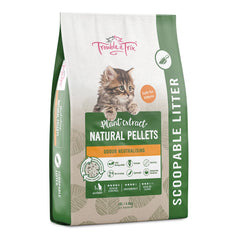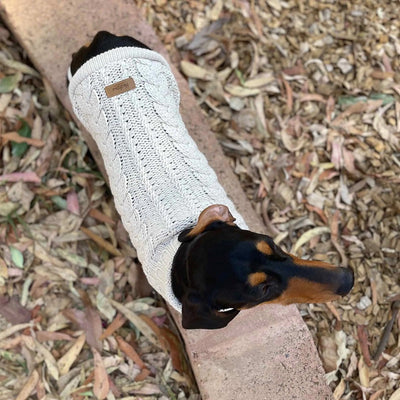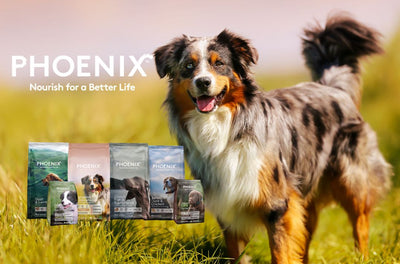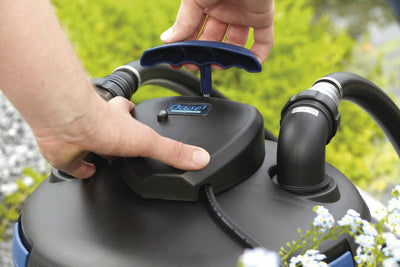
Flushing your cat's poo down the toilet might seem like a convenient option, but is it allowed in Australia?
Before you flush away your cat's business, be sure to understand the regulations and what your local government recommends. Read on to find out if flushing cats poo is the right thing to do.
Australia’s Toilet Flush Regulations.
While Australia doesn’t have any specific laws or regulations against flushing cat poo, local governments do have their own restrictions. Cat waste contains parasites that can cause human health risks, this is predominantly why you shouldn't flush cat feaces in the majority of council areas. It's best to check with your local council to determine if it’s allowed.
Sydney Water recommends only flushing the 3 P's- Pee, Poo, and Paper (toilet).
What About Flushing Cat Litters?
No, it is not recommended to flush cat litter down the toilet. Cat litter can cause serious problems for your plumbing and sewage systems. Most cat litter is made from clay or other materials that can absorb water and expand, causing blockages in your pipes. Additionally, some types of cat litter can contain chemicals or bacteria that can be harmful to aquatic life if they end up in bodies of water.
Instead, it is recommended to dispose of cat litter in a trash bag and dispose of it in the garbage. Some cities also have pet waste disposal services or designated bins for pet waste, so you may want to check with your local waste management department for more information.
Is There a Safe and Harmless Way to Dispose of Cat Poo?
Yes, the best way to dispose of cat poo safely is to compost it in a heat compost system. This will involve a little science to get the correct ratios of carbon, nitrogen and oxygen the correct ration of water. Composting requires a proper balance of carbon-rich materials (often referred to as "browns") and nitrogen-rich materials (often referred to as "greens"). The optimal composting ratio for these materials is typically 30 parts carbon to 1 part nitrogen. Cat litter such as Oz Pet Litter, that is made from plant based material can also be added to your compost heap or compost bin.
What Cat Litter is Biodegradable?
-
Breeders Choice Cat Litter: This litter is made from 100% recycled
paper.

- Trouble & Trix Clumping Cat Litter With Baking Soda & Fresh Scent: Excellent odour control through the use of natural ingredients baking soda & lavender! Unique litter design that has excellent absorbency qualities by trapping liquid & clumping together making cleaning easy & effective.
- Oz Pet Litter: Made from plant based material
-
Trouble & Trix Natural Cat Litter: A pelleted cat litter made from plant extracts, bakig soda help with odour control.
-
Catmate Litter: Made from recycled timber - An excellent source of
carbon for your compost!

Making Compost out of Cat Poo?
Composting your cat's poo is a great way to responsibly and effectively dispose of it. It's an eco-friendly practice that utilises nature's natural decomposition process while returning vital nutrients to the soil. We recommend using the hot method of composting to ensure that any harmful pathogens are killed during this process.
Composting cat poo is possible, but it requires some additional steps to ensure safety and effectiveness. Here are the steps to compost cat poo:
-
Choose a designated compost bin: Select a compost bin that is specifically used for cat poo composting. This bin should be located in a well-ventilated area away from any edible plants.
-
Add a carbon source: To help balance out the nitrogen-rich cat poo, add a carbon source such as sawdust, shredded newspaper or dry leaves.
-
Add cat poo: Collect the cat poo from the litter box and add it to the compost bin. Be sure to wear gloves and avoid adding any litter (unless it is biodegradable) or other contaminants.
-
Mix and aerate: Mix the contents of the compost bin thoroughly and aerate it regularly to ensure proper decomposition. You can use a compost aerator or a pitchfork to turn the compost.
-
Monitor temperature: Cat poo composting requires high temperatures to kill any harmful bacteria or parasites. Use a compost thermometer to monitor the temperature and ensure it reaches 60-71°C.
-
Wait for it to compost: Depending on the conditions, it can take several months to a year for the cat poo to fully compost. When the compost is dark and crumbly with a soil-like texture, it is ready to use.
-
Use compost safely: Before using the compost, make sure it has fully composted and cooled down. Avoid using the compost on any edible plants or in areas where children or pets play.
It's important to note that composting cat poo may not be suitable for everyone, especially those with compromised immune systems, pregnant women or young children. Consult with your local waste management agency for any guidelines or regulations on composting pet waste.
© weknowpets 2023






